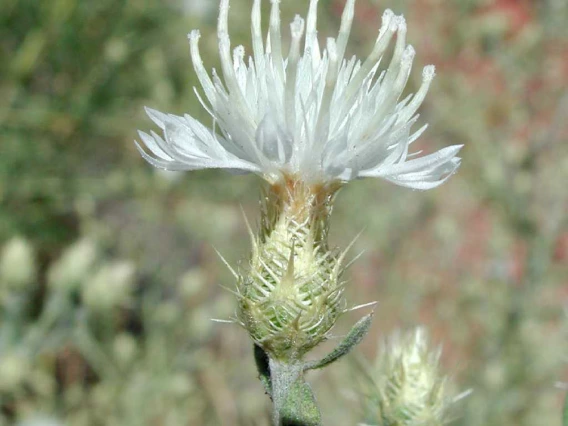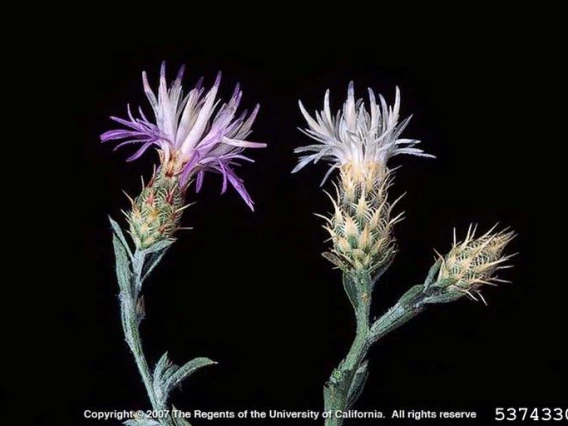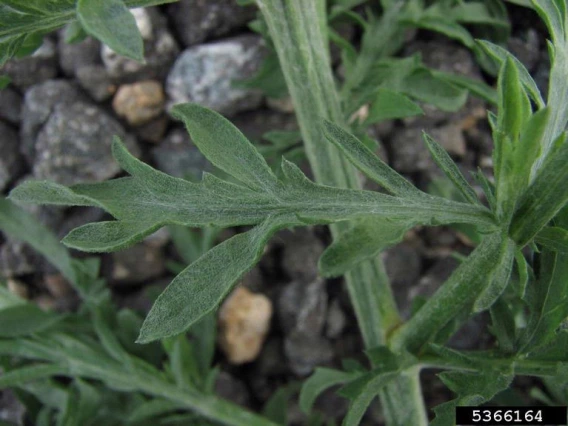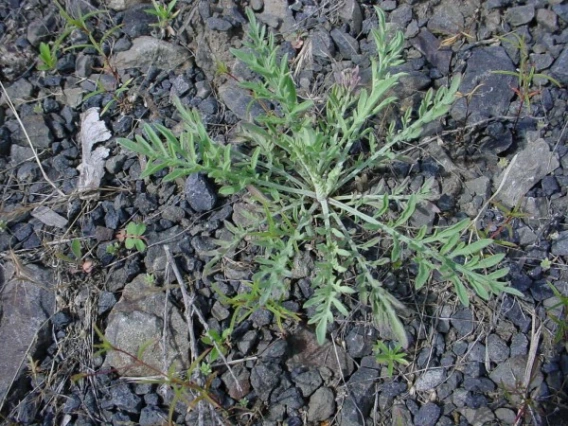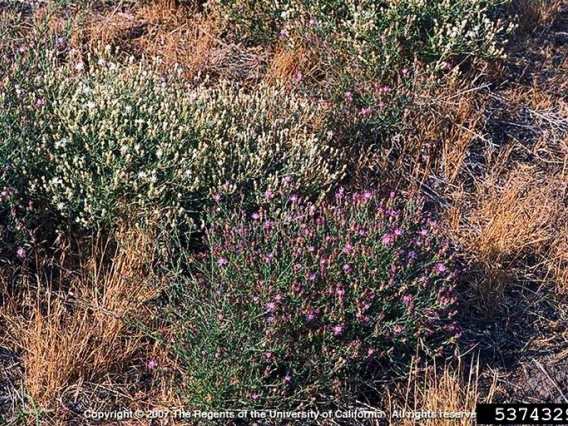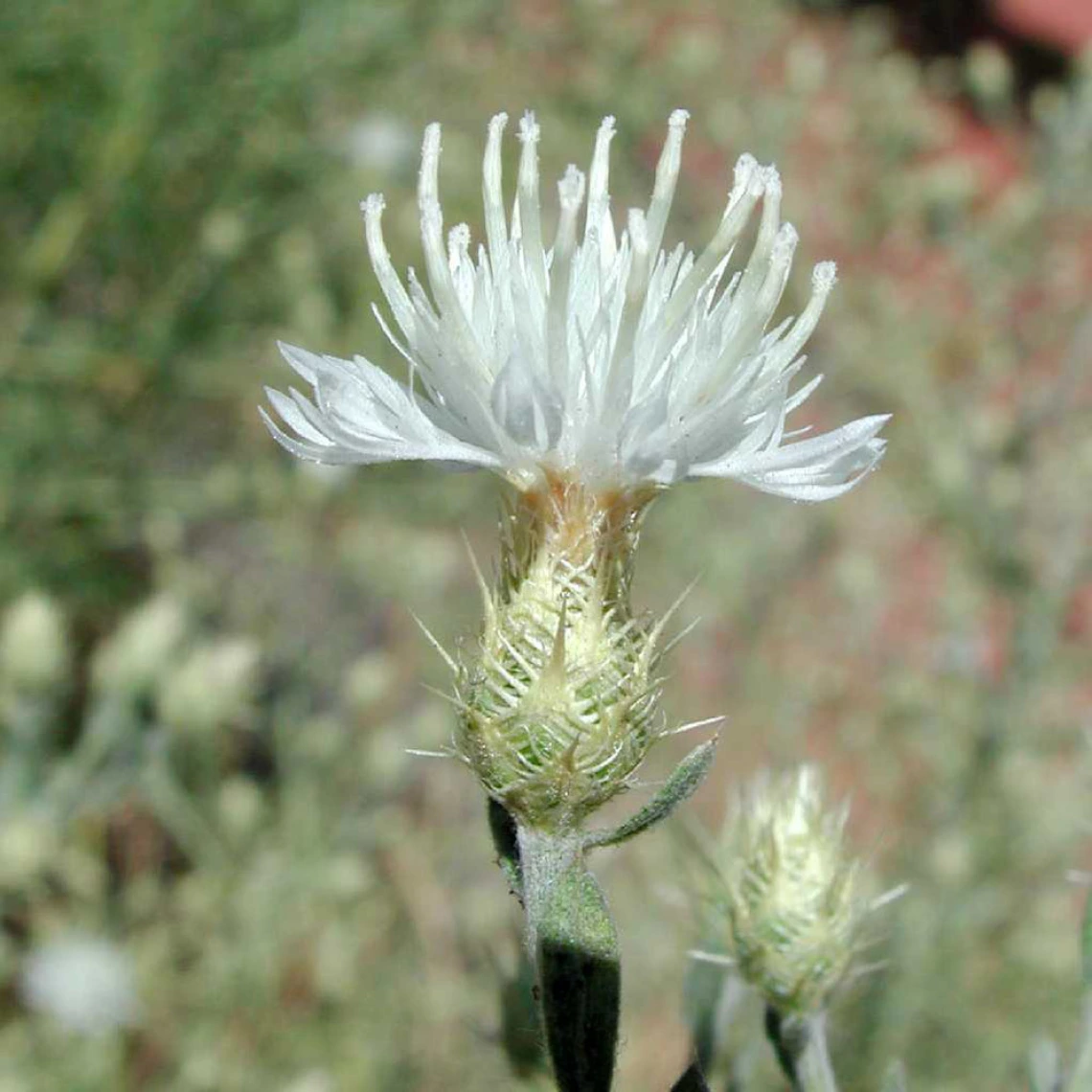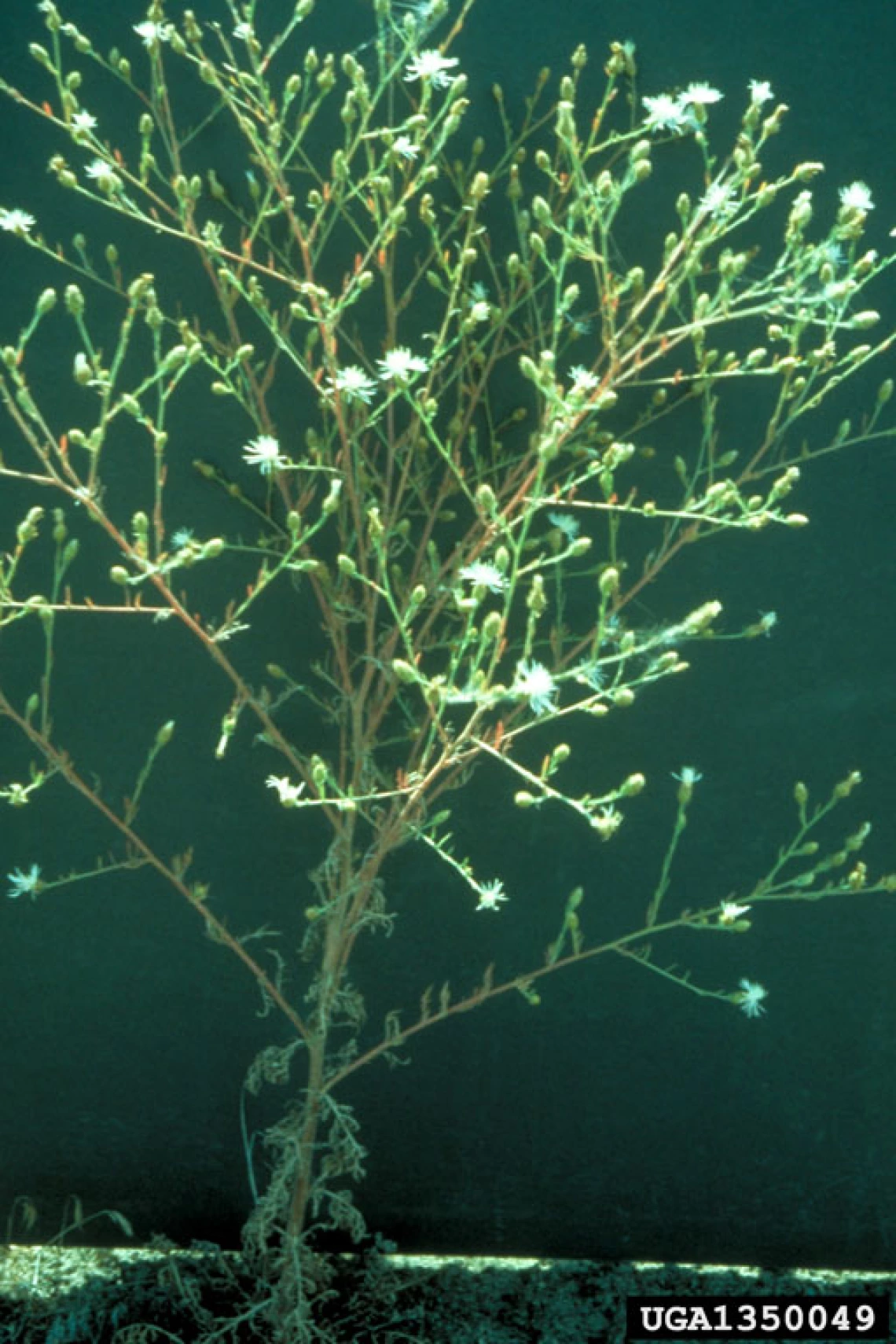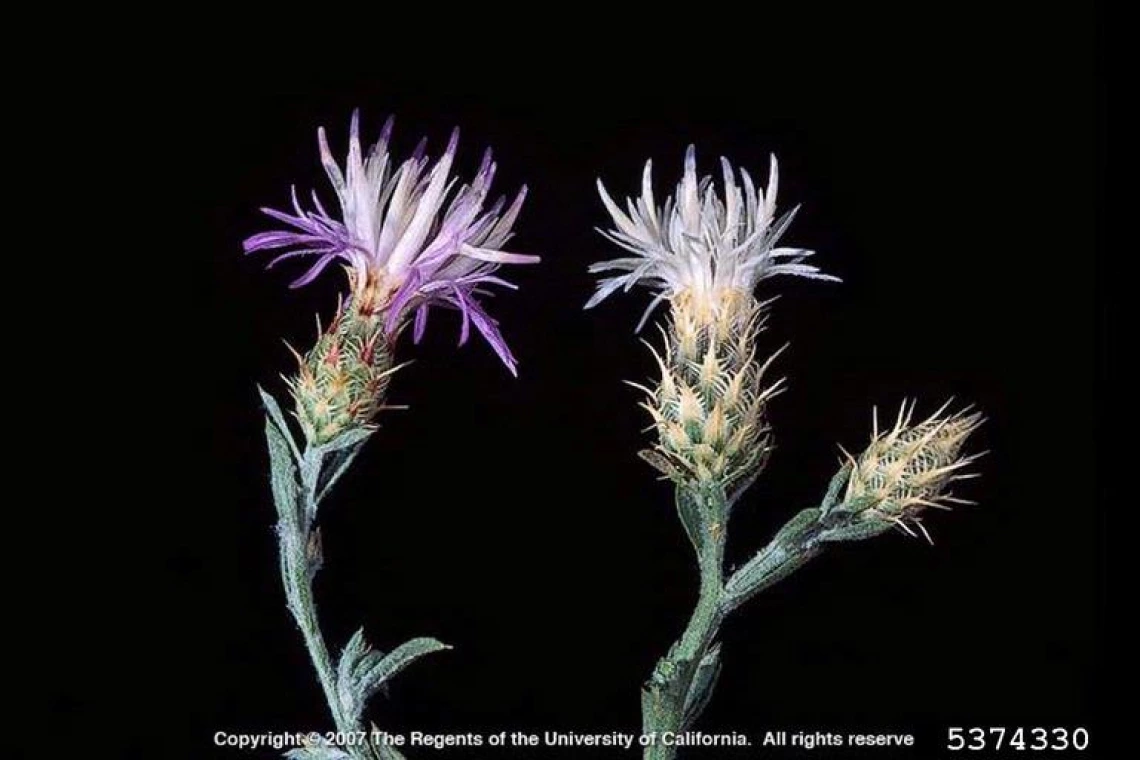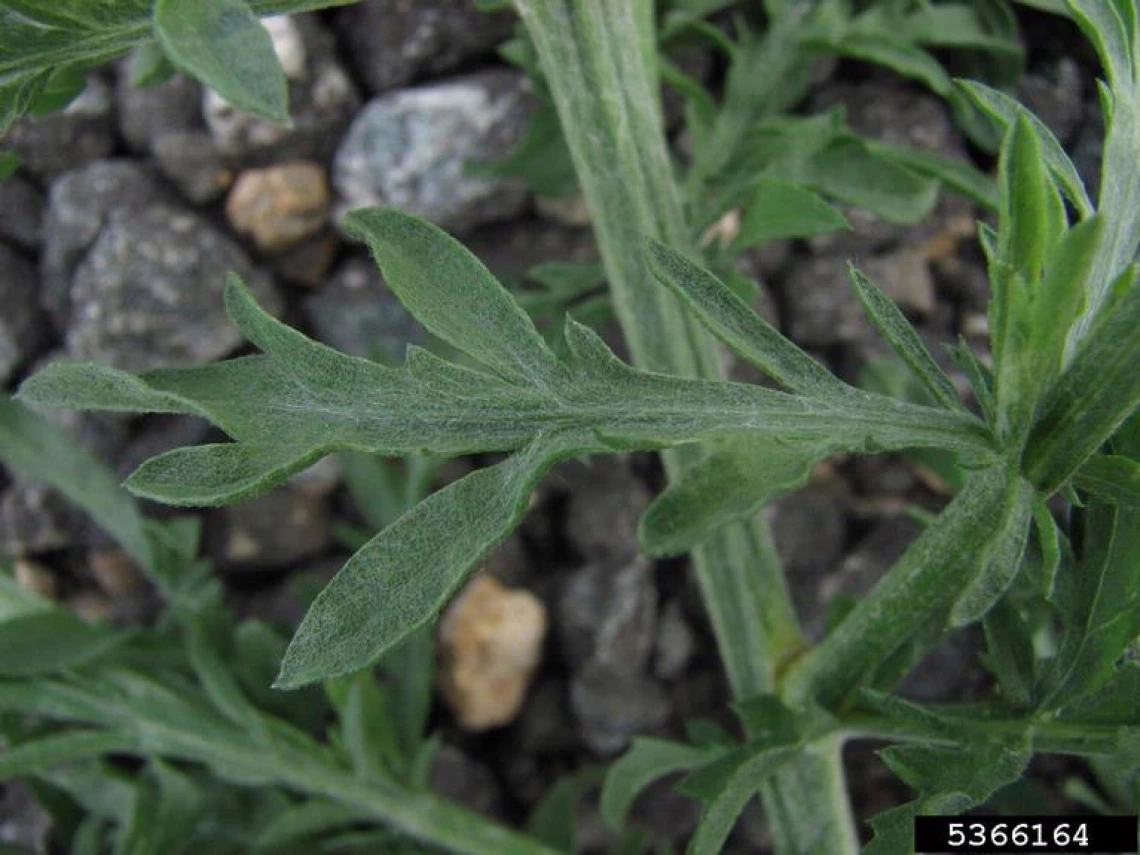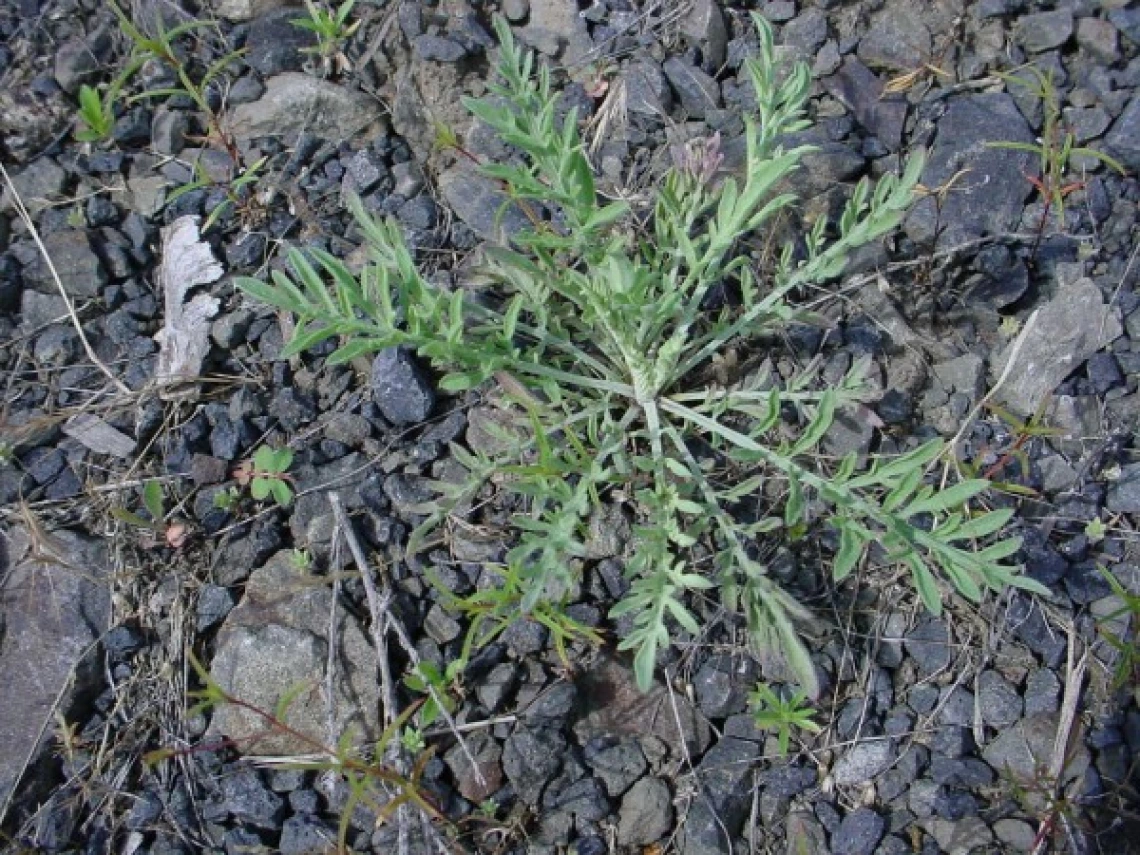Image

Diffuse knapweed habit
Max Licher, swbiodiversity.org/seinet
Common Name(s)
Diffuse knapweed
Scientific Name
Centaurea diffusa
Family
Sunflower or Aster family (Asteraceae)
Reasons for concern
This plant is a prolific seed producer. It can quickly take over both disturbed and managed areas, outcompeting native species and reducing plant diversity and wildlife habitat. It also contains allelopathic (toxic) chemicals that suppress the growth of nearby native vegetation.
Classification
Non-native. Categorized as a Class B noxious plant on the Arizona Noxious Weed list, meaning that it “may be a high priority pest for quarantine, control, or mitigation if a significant threat to a crop, commodity, or habitat is known to exist.”
Botanical description
Broadleaf, mounding, herbaceous plant.
Leaves
Begins life cycle as rosette with finely divided, gray-green leaves. Leaves on mature plant covered with short dense hair. Long, lobed lower leaves give way to smaller leaves further up the stem.
Stem(s)
Grows single stem (rarely 2), rough, with many spreading branches, 1 to 3 feet tall. Stems begin to appear in May.
Flowers
Blooms June through October. Flowers white, rose-purple or lavender. Numerous flowering heads solitary or in clusters of 2 or 3 at ends of branches. Very sharp, spiny bracts (modified leaves) under flowers which flair outward. Longest terminal spine on bracts particularly sharp. Flowers do not fall off stems when seeds mature.
Seeds
Seed production starts in July
Roots
Large taproot
Native to
Eurasia
Where it grows
Waste areas, roadsides, dry rangelands. Sunny, dry, disturbed areas. Low and high altitudes. Won’t tolerate moist areas or shade. Elevations up to 8,500 feet.
Lifecycle
Annual, biennial or short-lived perennial
Reproduction
By seed
Weedy Characteristics
Diffuse knapweed can germinate in winter or summer, grow very large, and is highly aggressive. It produces allelopathic (toxic) compounds that prevent other plants from growing nearby. Plants produce thousands of seeds on average, which remain viable for years. Occasionally will tumble like tumbleweed, spreading seeds far and wide. Weed-whacked or grazed plants will re-grow.
Look-alike Plants
Diffuse knapweed can be confused with non-native Spotted and Russian knapweeds, both of which need to be eradicated. See separate pages on these invasive plants on this website.
Control Strategies
Hand dig or pull the rosette during their first year of growth. Disturb the soil as little as possible, to reduce germination of new seedlings. Step down disturbed soil. During the second year, remove 2 to 3 inches of the taproot to prevent re-growth. Never let it go to seed. Bag any buds, flowers or seed heads. Always wear gloves when pulling to avoid serious skin irritation. Frequently monitor previous infestations for new growth. Plant desirable native species to outcompete invasives. Mowing is not recommended as it may stimulate new knapweed growth. Several insect biological controls are available. Herbicides can be effective on the rosette stage. Contact your local county extension office for more information on chemical control.
References
- Diffuse knapweed Noxious Weed Control Board, Washington State
- Diffuse and Spotted Knapweed Colorado State University Extension

